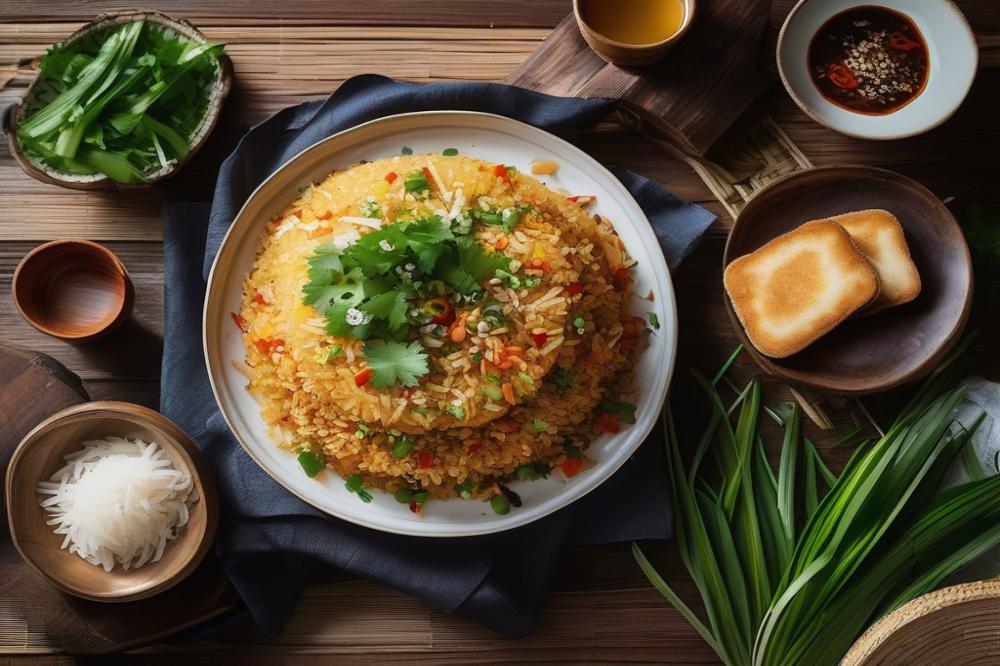Introducing Bánh Đúc
Bánh Đúc is a beloved street food from Vietnam that has captured the hearts and taste buds of many. This dish is made from glutenous rice, which gives it a delightful chewy texture. Often enjoyed as a savory snack, Bánh Đúc showcases a wonderful combination of flavors and cooking styles. Its popularity stretches across various regions of Vietnam, where each area adds its own twist to the recipe.
Different variations exist, making it a versatile dish. In some places, it is served with meats, while others might incorporate vegetables and aromatic herbs. The pan-fried method adds a layer of crispiness that makes each bite satisfying. Street vendors often serve this delectable treat hot, often accompanied by a flavorful dipping sauce that heightens the savory taste.
A typical serving of Vietnamese rice cakes might include ingredients like scallions or mushrooms, giving it richness. The unique cooking method varies by region, yet the essence of Bánh Đúc remains constant. It symbolizes a well-loved part of Vietnamese culinary culture, which thrives on blending tradition with innovation. Whether enjoyed as a quick snack or a heartfelt meal, Bánh Đúc continues to enchant all who try it.
What is Bánh Đúc?
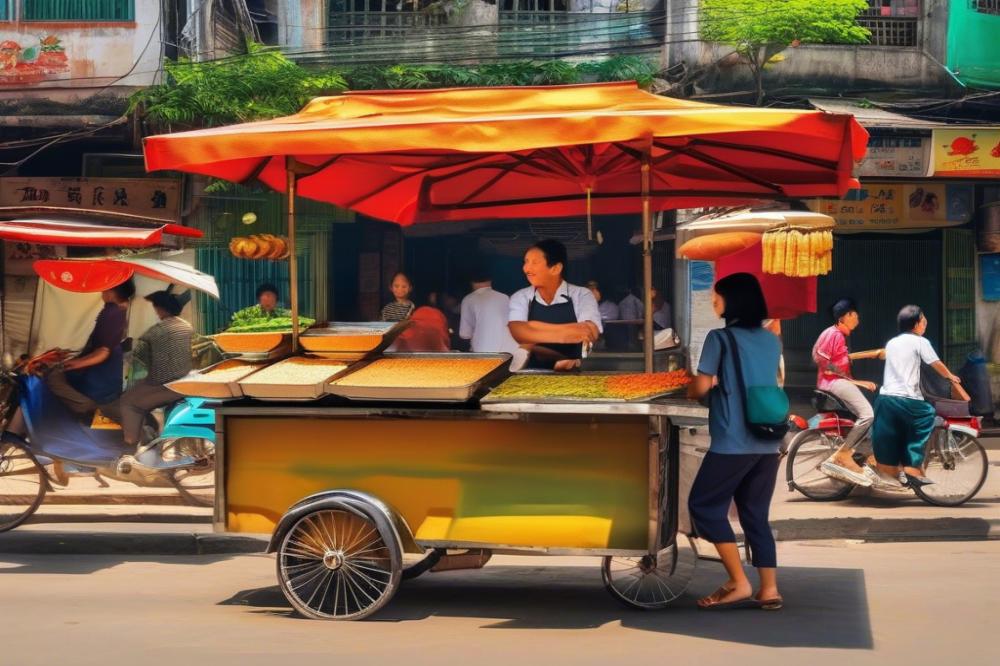
Bánh Đúc is a type of Vietnamese rice cake made from glutinous rice. This dish comes in various forms, but two popular styles are steamed and fried. The steamed version tends to be soft and smooth, with a delicate texture. Many enjoy it served with savory toppings or a delicious dipping sauce.
The pan-fried version stands out with its crispy exterior and chewy inside. When prepared using the right recipe, it becomes a delightful snack that tempts many street food lovers. This cooking method adds a nice contrast between the crunchy outside and the tender center, enhancing the overall flavor experience.
Savory ingredients like mushrooms, pork, or shrimp are often mixed into the batter, elevating the taste. Street vendors frequently sell this dish, showcasing its popularity in everyday Vietnamese cuisine. People typically eat bánh đúc at festivals or family gatherings, making it a cherished option for many occasions.
This rice cake is more than just food; it connects people with their cultural roots. Enjoying this dish brings back memories of home, family, and tradition. When paired with a flavorful dipping sauce, the experience becomes even richer and more satisfying.
Ingredients and Cooking Instructions
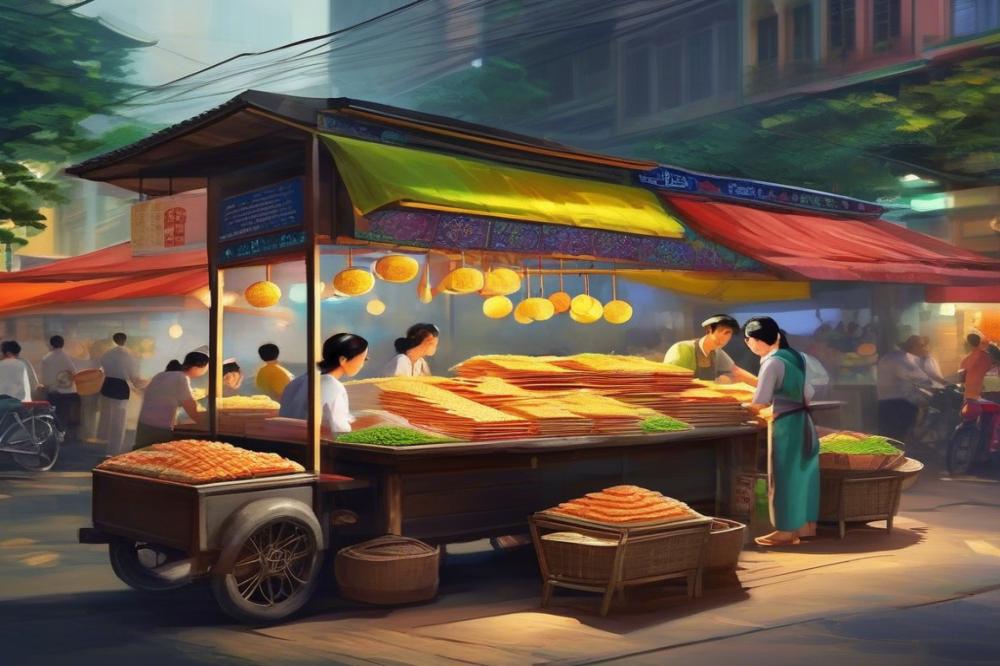
When it comes to making Vietnamese Pan-Fried Rice Cakes, having the right ingredients is key. You’ll need the following:
- 1 cup glutinous rice flour
- 2 cups water
- 1/2 teaspoon salt
- 1 tablespoon sugar
- 1 tablespoon vegetable oil
- Optional garnishes: sliced scallions, fried shallots, or fresh herbs
Now, let’s dive into the cooking process. This method might seem simple at first, but it leads to a delicious savory snack.
Start by mixing the glutinous rice flour, water, salt, and sugar in a bowl. Stir the mixture until it is completely smooth. This is your batter.
Next, heat the vegetable oil in a pan over medium heat. Once hot, carefully pour your rice mixture into the pan. Cooking should take place slowly to ensure even browning.
Continue cooking until the base turns a nice golden brown. When ready, gently flip the cake to cook the other side. This is where the magic happens—the savory aroma fills the kitchen.
After both sides are cooked, remove the rice cake from the heat. Allow it to cool for a bit before cutting it into manageable pieces. Enjoying these tasty bites is a true street food experience.
To elevate the flavors, serve your rice cakes hot. Consider pairing them with a homemade dipping sauce for that extra kick. It can really enhance your snack time.
Nutritional Information
Each serving of this traditional dish offers about 170 calories. The protein content is roughly 3 grams, while carbohydrates come in at about 34 grams. The fat content is low, around 4 grams. Glutinous rice is known for its energy-boosting properties. It offers a unique source of quick energy thanks to its carbohydrates. This makes Bánh Đúc not just a tasty treat, but also a good option for a light meal or snack during the day.
How to Serve Bánh Đúc
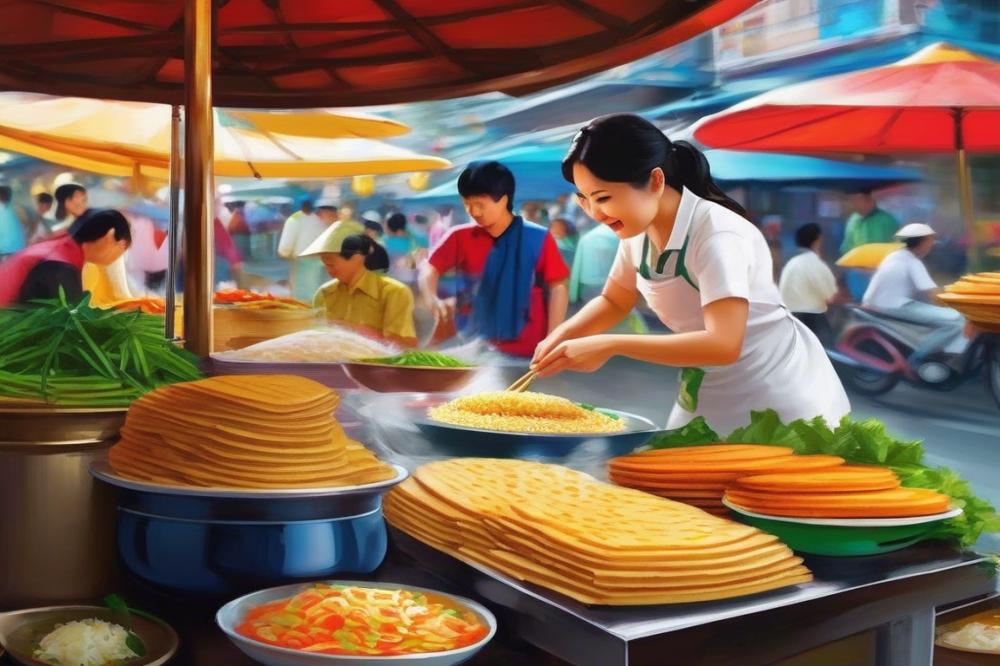
Enjoying bánh đúc is a delightful experience that can vary widely. This dish is often consumed as a savory snack or a satisfying street food meal. Traditionally, it is served with various accompaniments that enhance its flavors.
Many people opt for a simple dipping sauce made from soy sauce, vinegar, and chili. This mixture adds a tangy kick that complements the mild taste of the rice cakes. Some like to drizzle a bit of fish sauce on top, which brings an extra layer of depth to each bite.
Adding fresh herbs can elevate this dish even further. Mint and cilantro provide a fresh contrast to the rich flavors of the bánh đúc. Chopped scallions also work perfectly, giving a hint of sharpness.
For those who enjoy experimenting, consider toppings like crushed peanuts or fried shallots. These additions offer varied textures, creating a more interesting eating experience. People often personalize their plates to suit their tastes, making it a fun dish to share with others.
In Vietnamese culture, it is common to serve bánh đúc at gatherings or special occasions. This way of serving takes advantage of the unique cooking method that combines the sweetness of the glutenous rice with savory, seasoned ingredients. When served hot, the cakes have a delightful chewiness that everyone loves.
Whether it’s a casual snack or part of a larger meal, the versatility of this dish is appealing. Bringing it together with a selection of dipping sauces and fresh toppings makes every bite enjoyable. Sharing it with friends can create a vibrant atmosphere. The enjoyment of bánh đúc is truly all about enhancing flavors and discovering personal preferences.
Cultural Significance of Bánh Đúc
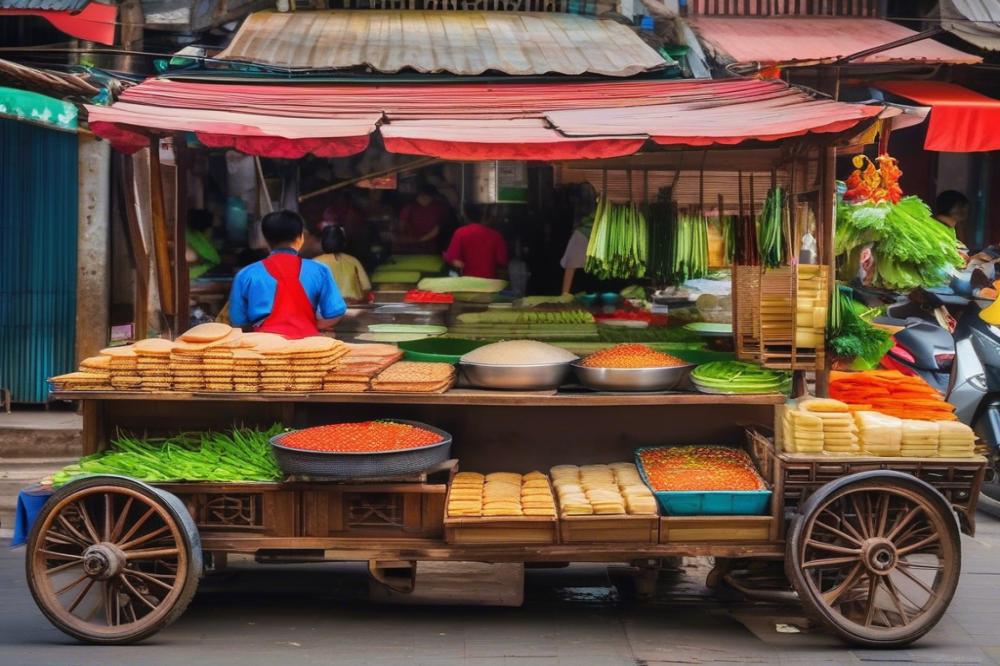
Bánh Đúc holds a special place in Vietnamese culture. Its soft, savory texture makes it a favorite during festivals and family gatherings. Many enjoy sharing this dish as a way of connecting with loved ones. Street vendors sell these cakes, attracting locals and tourists alike. The aroma of pan-fried rice cakes fills the air, inviting people to stop and taste.
This dish is not limited to one style. It varies by region, showcasing local ingredients and flavors. In northern Vietnam, the cakes often have a rich filling, while southern versions may include shrimp or other seafood. The cooking method can change based on where you are. Some prefer the crispiness from being fried, while others might enjoy steamed variations.
At celebrations, bánh đúc symbolizes unity and joy. Family members often gather to prepare it together, following a cherished recipe passed down through generations. Personal stories often accompany each serving, reflecting memories and traditions. With a customized dipping sauce, everyone can enhance the flavor to their liking.
Street food culture in Vietnam thrives with this dish as a popular snack. The convenience of grabbing a piece from a vendor makes it an everyday delight. Enjoying bánh đúc while walking through bustling markets adds to its charm. No two experiences are alike, as every vendor may have their technique and choice of ingredients. This diversity contributes to the dish’s appeal and cultural richness.
Final Thoughts on Bánh Đúc
Bánh Đúc holds a special place in Vietnamese cuisine. It is not just a dish; it is a part of the culture and tradition. Many consider it a beloved street food, often enjoyed at bustling markets or by food vendors. This pan-fried delicacy is cherished for its satisfying texture and savory flavor that captivates the taste buds.
Making this traditional recipe at home can be a rewarding experience. When cooking, you not only learn about the ingredients but also connect with the rich culinary history of Vietnam. Each bite of this treat offers a glimpse into the hearts of many families who have passed down their versions through generations.
Trying your hand at Bánh Đúc can be fun and fulfilling. It encourages creativity in the kitchen while allowing you to share a piece of Vietnamese culture with friends and family. Whether served as a snack or part of a larger meal, this dish never fails to impress.
As you embark on this culinary adventure, remember the joy of cooking and the flavors that tell a story. This savory treat invites you to experience a classic taste of Vietnam. Dive into this delightful recipe and savor the magic of homemade food.

